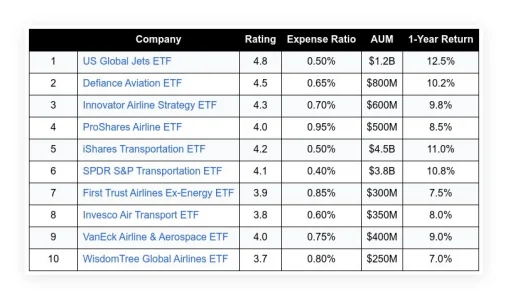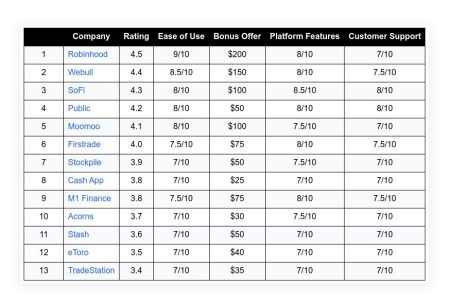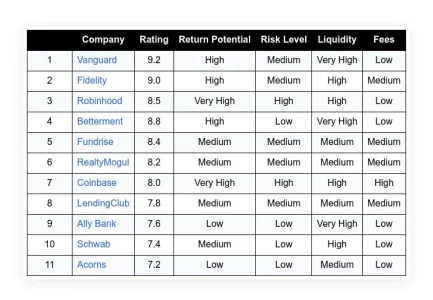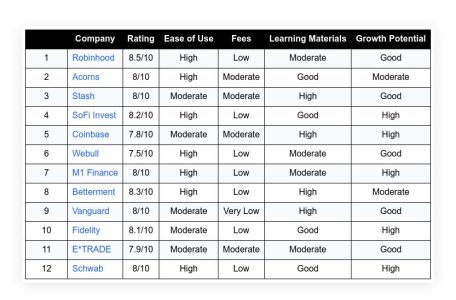Retirement planning is a must for veterans. While US veterans have unique benefits available to them, they need more than these benefits to construct a viable retirement strategy. To secure a stable retirement, veterans must effectively leverage all available resources.
Annuities are insurance contracts that are issued and distributed by financial institutions. They are purchased by individuals mainly for retirement purposes. Annuities require issuers to pay their purchasers through fixed or variable income streams. Such payouts can begin immediately or commence at a designated future date.
VA loans are particular home loans offered by the US Department of Veterans Affairs (VA) to help veterans, service members, spouses, or families buy homes. Some loans have unique benefits like zero down payment and favorable payment terms.
Both annuities and VA loans can be used as significant financial tools to reinforce veterans’ financial resilience. Here, we discuss how annuities and VA loans work. More importantly, we explore how they can achieve synergistic benefits. We also list practical tips for retiring veterans on using both instruments to manage retirement strategically.
Table of Contents
ToggleUnderstanding Annuities: A Retirement Staple
Annuities are considered staples of retirement planning. They are retirement-friendly financial products sold by insurance companies. An annuity is designed to provide a reliable income stream in the later stages of life.
Annuities are written contracts between a person and a life insurance company. In the agreement, the insurance company commits to making regularly spaced payments to the investor in return for a premium or a series of premiums paid.
Annuities vs life insurance and savings
Although sold by life insurance companies, annuities are not life insurance. Life insurance policies benefit a policyholder’s family if the policyholder passes away. Conversely, annuities help savers and retirement planners accumulate money for future income needs.
An annuity is not a savings certificate or savings account, either. Hence, it must not be bought for short-term purposes. The most appropriate use for an annuity contract is to fund retirement.
Parties to the contract
Compared to savings, insurance, and other investment products, only annuities can promise to pay an income that guarantees to last as long as you live. An annuity contract has three primary participants: the owner or investor, the beneficiary, and the annuitant.
The owner is the purchaser of the annuity—hence, the one who pays the premiums and has the right to surrender the annuity. The owner is also responsible for the taxes due upon payout and surrender of the annuity. Moreover, the owner usually names the contract’s beneficiary.
The annuity’s benefits are calculated based on the annuitant’s age and life expectancy. Most often, the owner and annuitant are the same person. The beneficiary receives the annuitant’s death benefit, which can be paid in multiple payments over time or in a single payment.
How do annuities work?
Annuities transfer the risk of outliving one’s savings from the individual investor to the insurance company.
Annuities are designed to convert a retiree’s lump sum into a series of payments, guaranteeing a stable income for a specified period. The payments can also last for the annuitant’s lifetime, making them especially beneficial in retirement.
The following is a breakdown of steps outlining how annuities work:
Purchase of the annuity: The first step
The owner pays the insurance company a lump sum or series of payments.
Accumulation phase: Growth of funds
In the case of deferred annuities, this period is when invested funds grow. The growth can be indexed, fixed, or variable depending on the annuity type.
Annuitization phase: Payouts
In the annuitization phase, the owner receives payments. Immediate annuities start straightaway, while deferred annuities postpone the payments to an agreed-upon future date.
Payout options
Annuities offer varied payout options, including joint-life payments, life-only payments, and fixed-period or ” period-certain” payments.
In fixed-period or “period certain” payments, you select a defined period to receive your annuity’s payout. This duration can be 10, 15, 20 years, or another period. In this annuity payment arrangement, the payments after the owner’s death may go to the designated beneficiary.
For example, in a 15-year fixed-period payout, the owner’s death in 10 years means the beneficiary gets paid for the remaining five years.
In a fixed amount or systematic withdrawal schedule, you decide how much you want to receive each month. Your payments continue until you run out of money or choose to stop them. In this withdrawal schedule, the insurance company does not guarantee that the owner outlives the income payments. The amount you receive and the length of your benefits depend on your account size.
In life-only arrangements, the insurance company will make payments for as long as you live. Your payment amount is determined by life expectancy. The longer your calculated life expectancy, the smaller your monthly payment amount. In this payout method, you are not guaranteed the total amount accumulated.
However, you are guaranteed a regular income for the rest of your life. Those who live long will receive more than the annuity’s accumulated value.
In a joint or survivor life arrangement, the company pays the owner or their survivor for their lifetimes. The regular payment amounts, in this case, would typically be smaller than those in life-only options because the company pays for the longer of the two lifetimes.
In guaranteed term or life-with-period-certain payments, you are provided an income stream for life, similar to the life-only option. However, in addition, you have the option to choose your guaranteed period, like a 10-year guaranteed term. With this arrangement, your annuity pays your beneficiaries or estate if you die before your guaranteed period ends.
Lump sum payment arrangements let you receive your annuity payout in a single amount or lump sum. Many advisors do not recommend this option. It has some disadvantages, such as income tax payments on the year of the lump sum payment. These can be hefty because you must pay income tax on your annuity’s entire investment-gain portion.
Death benefits
In specific contracts, the insurance company pays your beneficiary a death benefit if you die before your income payments start. The most common death benefit is equivalent to the contract value or the total premiums paid, whichever is more significant.
What are the types of annuities?
There is more than one type of annuity. Annuities vary according to their benefits and structure.
Fixed annuities
Fixed annuities, as the name suggests, provide guaranteed regular payments. They are generally low risk for this reason. These annuities offer a fixed interest rate for a specified period.
Fixed index annuities
A fixed index annuity is an annuity contract that provides a tax-deferred, long-term retirement savings vehicle. It offers principal protection in down markets combined with growth opportunities.
This type of annuity’s returns track the performance of underlying indexes or collections of stocks like the S&P 500. You can attach addendums or riders to guarantee lifetime income with these annuities.
Structured annuities
Structured annuities cater to risk-averse investors while offering opportunities to benefit from the growth of stocks or equities. They provide protection, limiting potential losses in down markets.
With these annuities, owners are not directly investing in the market. Instead, they choose from indexed accounts that track specific underlying market indexes. Each type of indexed account offers growth opportunities and protection features that allow investors to recover a predetermined percentage of their losses.
Structured annuities do not charge a fee and have a maturity period of no greater than six years.
Variable annuities
You can purchase variable annuities with a series of payments or a lump sum. You can choose to invest in a set of sub-accounts similar to mutual funds.
Variable annuities’ payments are based on the performance of the chosen investments within the given annuity. Thus, ROI is not guaranteed; hence, they are “variable.”
Nonetheless, variable annuities may offer higher returns but are higher-risk investments than fixed index annuities. Many variable annuities have riders guaranteeing lifetime income benefits and loss protection to help offset their risk. However, such riders require additional fees.
Immediate annuities
Immediate annuities are usually purchased with a single lump sum payment. They are designed to provide retirees with a guaranteed monthly income stream for a specified period—usually the lifetime of the “annuitant.”
With immediate annuities, the payments commence almost instantaneously after the lump sum investment. These annuities are best for retirees or planners who wish to convert their savings to a steady income stream as soon as possible.
Deferred annuities
Deferred annuities begin their payments at a set future date. Thus, they allow the lump sum or investment to grow longer. These annuities suit individuals who have more time to prepare their retirement income.
The Popularity of Annuities Among Retirement Planners
The popularity of annuities for retirement planning has surged in recent years. People are attracted to annuities’ guaranteed income stream, which helps eliminate the risk of outliving their savings. Of course, this assumes that retirees can bear the traditionally high price of purchasing annuities.
Sales of fixed-rate deferred annuities have soared in the last two years. According to trade association LIMRA, these annuities’ total sales reached $164.9 billion in 2023, breaking records and more than tripling their previous figures of $50 billion in 2020 and 2021.
The first jump in annuity sales occurred between late 2022 and early 2023. This spike happened when interest rates were rising amid high inflation. The dramatic increases in interest rates meant that consumers could now get higher rates on fixed annuities.
The rates increased because annuity companies invest retirement money in various securities, such as bonds, which have been generating higher returns. Annuity companies also swiftly reacted to market changes, adjusting their rates faster than banks.
When the Fed raised its rates, the banks delayed increasing CD rates. The insurance industry, and thus the annuity industry, on the other hand, moved quickly, causing the initial surge. The demand for safer places to invest money spiked as recession fears peaked. Annuities became the ideal investment, as they promised to offer returns without stock market risk. Since then, however, a severe recession has yet to materialize. In hindsight, people were better off investing in the market, but there was no way to know for sure.
The second big spike in annuity sales occurred in the fourth quarter of 2023. Sales have recently increased due to the Fed signaling future rate cuts, encouraging people to buy while the favorable annuity rates remain. Even as annuities are seen as costly, people have been seizing the opportunity to secure rates at the 5 percent level.
Understanding VA Loans
Today’s trusted mortgage home loan providers offer competitive options such as simplified application processes, low down payments, and flexible terms. However, veterans may be able to avail of custom benefits that better suit their financial situation.
VA loans are mortgage loans offered through a program established by the United States Department of Veterans Affairs. These loans are available to veterans, active-duty service members, and some surviving spouses.
They provide significant veteran-focused benefits compared to conventional mortgage options. The premise is that veterans may need more time to build up sufficient savings or credit while in service.
Key Benefits of VA Loans
VA loans offer unique benefits for veterans and their families, including:
Zero down payment
VA loans are appealing because they usually don’t require a down payment, fulfilling their purpose of making homeownership more accessible to eligible people.
Lower interest rates
VA loans offer competitive interest rates—often lower—than conventional loans. These lower rates can result in substantial savings over the life of the loan.
Flexible credit requirements
VA loans are typically more lenient regarding credit requirements than other types of loans. This feature allows more veterans to qualify.
No Private Mortgage Insurance (PMI) requirement
Conventional loans usually require PMI if the down payment is below 20 percent. However, VA loans do not entail this additional monthly cost, thus making them more attainable.
Avoidance of foreclosure
The VA office offers various means of assistance to help veterans avoid foreclosure.
Loans are assumable
Other veterans or qualified persons can assume VA loans. The transition to new loan ownership will be smooth if the original borrower cannot sustain payments or needs to sell the home for other reasons.
How VA Loan Benefits and Annuities Complement Each Other
VA loans and annuities may not have apparent alignments on the surface, but you can integrate them to enhance your financial security. The following are vital ways annuities and VA loans can complement each other:
Creating a stable income stream
Annuities provide a steady and reliable future income stream. This income can help cover mortgage payments secured through a VA loan. Annuity income helps retirees manage their housing costs minus the financial stress.
Interest rate security
VA loans generally offer competitive interest rates—lower than conventional loans. Fixed annuities provide a guaranteed rate of return on investments. This dynamic produces dual security and helps retirees manage their finances better.
Tax benefits
Some types of annuities and VA loans offer tax advantages. Annuities can grow tax-deferred, and VA loans do not have a prepayment penalty. Both tax benefits help retirees accumulate more savings and manage their tax liabilities efficiently.
Protection against longevity risk
VA loans create stable housing situations for veterans. Annuities complement this stability by guaranteeing income for life. Both contribute to general well-being and mitigate the risk of retirees outliving their assets.
Non-utilization of PMI savings
As VA loans don’t require paying PMI, retirees can divert their savings towards purchasing an annuity.
Diversified asset allocation
Retirees can diversify their portfolios further by taking out VA loans and annuities. VA loans are essentially real estate investments that gain equity over time. Annuities stabilize retirement income and help protect it against market volatility that affects other investments.
Protection against inflation
To a certain extent, real estate investments protect against inflation. Rental properties have been known to keep up with inflation as rental costs typically adjust to the inflation rate. VA loans do not allow investments in commercial property.
However, even if it is intended for primary residences, you can use a VA loan for an investment property. You can use your primary residence as an investment property to help you earn extra income.
You can earn rental income on a VA loan when you purchase a property big enough to rent out a guest house or several rooms. Ensure the property you buy with the VA loan is your primary residence. Also, get your mortgage approval early. When you know how much you can afford, you can also estimate the space you need to rent out.
VA loans can be used to strategically buy properties bigger than a single-unit home, like duplexes, triplexes, or quadplexes. As long as one of the units is your primary residence, you can earn rental income on the rest, thus creating an inflation-proof investment.
Indexed annuities offer a measure of protection against inflation. These annuities can help maintain your income’s purchasing power used to cover your housing costs under a VA loan.
Together, both investments provide a solid safety net against rising inflation.
Flexible payouts can align with VA loan repayment schedules
Annuities offer several payout options, as stated in the previous section. You can choose among these payout methods and align them with VA loan repayment schedules to relieve financial pressures in retirement.
Legacy planning
Annuities and VA loans can help with legacy planning. Annuities usually come with death benefits, so heirs or beneficiaries receive the remainder of the annuity’s value. VA loans can complement this feature by allowing surviving spouses or qualified family members to assume the loan and continue to live in comfortable housing.
Mental health and peace of mind
The peace of mind brought about by the synergistic benefits of VA loans and annuities is unquantifiable, yet it is of high value. Both instruments provide more comprehensive financial security, ensuring veteran retirees have a secure home and guaranteed lasting income.
Creating Viable Retirement Strategies With Both Annuities and VA Loans
Understanding the synergistic benefits of annuities and VA loans, veteran retirees can harness the following strategies to maximize their financial benefits:
Deferring annuity for future income
Retirees planning for their future expenses can invest in deferred annuities. Meanwhile, they can utilize a VA loan for their immediate housing needs. The deferred annuity allows their savings or investments to grow. This deferred income can provide a more significant income stream when they need it in later retirement stages and help with future VA loan payments if required later in life.
Using immediate annuity for mortgage payments
For veteran retirees who have already secured a primary residence through a VA loan, purchasing immediate annuities can ensure that they can cover their mortgage payments for life, no matter what happens. The annuity’s steady income can be aligned with monthly mortgage payments, providing peace of mind.
Combining fixed and indexed annuities
Retirees can benefit from guaranteed income and growth potential by combining fixed and indexed annuities. This strategy can complement the housing and financial stability a VA loan creates, solving immediate and future financial needs.
Tax benefit utilization
You can maximize retirement savings through tax benefits using VA loans and annuities. Annuities offer tax-deferred growth. VA loans don’t involve PMI costs. Both features can be used strategically to maximize tax liabilities.
Legacy and estate planning
Those who prioritize legacy planning will find annuities with death benefits most ideal for their goals, ensuring their heirs receive financial support. This estate planning strategy provides comprehensive support for surviving dependents and a VA loan that remaining family members can assume.
Income stream diversification
Income stream diversification is essential for today’s economic climate. Retirees can create a more robust financial plan by integrating annuities with other retirement income sources, such as pensions, Social Security, and diversified investments. Utilizing VA loans to purchase a primary residence with extra rental space can add to a diversified retirement income stream.
How Retirees and Veterans Can Manage VA Loans and Annuities Well
Retirees and veterans must understand the cornerstones of building a secure retirement plan that integrates VA loans and annuities. These include:
Understand your benefits: Check the fine print
Remember that annuities are both simple and complicated. It’s easy enough to understand the basic type—the income annuity—where you hand over a lump sum to the insurance company, and they provide you with a reliable monthly income stream for life, regardless of how long you leave.
However, payment amounts will be based on your age, gender, and interest rate when you bought the annuity. Monthly payouts are typically lower for women because they have a longer life expectancy than men. Regardless of gender, however, the older you are on the annuity purchase date, the higher your monthly payout will be.
When it comes to interest rates, timing matters—buying an immediate annuity when interest rates are low will lock you in for lower payouts for life. Therefore, even if you avoid market risk with fixed annuities, you inherently accept interest rate risk.
The US Federal Reserve hiked interest rates 11 times between 2022 and 2023. Thus, recent annuity buyers get significantly higher payouts than those who bought immediate annuities just a few years prior.
Consult a financial advisor
Some retirees may need to be more familiar with the different types of annuities and the nature of VA loans. Consulting a financial advisor who specializes in financial planning for veterans can help you get the whole picture and make wise investment decisions.
Qualified advisors help you navigate your options and develop a comprehensive plan that includes your financial goals, risk tolerance, and time horizon. They can help you integrate annuities and VA loans into your financial plan.
Plan for healthcare costs
While you are taking out VA loans and investing in annuities, it is essential to remember that you will have other prospective costs in retirement, such as emergency and healthcare expenses.
Ensure that your retirement plan makes provisions for healthcare costs. Your combined future income must accommodate such significant expenses in retirement.
Leverage technology
Tracking all your retirement investments, payments, and income may be challenging. Use technology and financial planning tools to keep track of your assets, revenue, and expenses. If you are still paying for your VA loan, you must factor this into your monthly budget, which is quickly done using a budgeting app.
Aim for diversified investments
Look beyond annuities and the potential benefits of your VA loan, like rental income, to diversify your investment portfolio. Include various income sources such as Social Security, personal savings, part-time work and consultancies, small business income, pensions, equities, alternative investments, etc.
Composing a well-diversified portfolio based on your financial capacity, needs, and goals will help you weather market conditions and economic changes during retirement.
Outline your financial goals clearly
Given that there is more than one type of annuity, you must understand which one best fits your financial goals. Misunderstanding annuity features could lead to potential losses of income and benefits.
For example, some annuities allow you to withdraw funds. However, if you withdraw more than a certain amount in the early years of your investment, you could pay a surrender charge. Moreover, it may cost you some guarantees. Think of these annuities as investment vehicles with tax benefits. They are more than a way to get guaranteed retirement income.
Periodically review and adjust your plan
Even with a sound retirement plan, your investments are vulnerable to market shifts and life changes. Stay adaptable. Work with your financial advisor to ensure your strategy remains effective in changing market conditions.
Understand tax implications
You must be keenly aware of the tax implications of your retirement portfolio and income sources. As mentioned in this article, VA loans and annuities have tax advantages you can leverage.
Prioritize debt management
Debt in retirement could severely impact your quality of life and ability to pay for your needs. Manage and prioritize debt repayment to ensure it doesn’t impede your financial security. You can use the stable income from your annuities to cover outstanding debts systematically.
Stay informed
Your retirement benefits are subject to changes in laws and regulations. Stay updated about the latest regulatory changes affecting your VA loans and benefits.
Utilize VA resources
The US government is supportive of its veterans. Make sure you maximize the resources and support services provided by the VA. You can gain insight and assistance in managing your benefits through these support systems.
Communicate with family
Communicating with family members is essential regarding retirement decisions, especially if they are your annuity beneficiaries or those likely to assume your VA loan. Transparency ensures everyone knows your plans and has the necessary copies of the paperwork. They will also learn how to support you when necessary.
Think Big Picture: Understand How Retirement Benefits Work Together
Annuities and VA loans offer unique benefits that can significantly increase financial security for US veterans. When planning retirement, take a step back to see the bigger picture.
How do each of your retirement investments complement each other? This consideration is valid not only for VA loans and annuities but also for all other investments, assets, and instruments that factor into a diversified retirement portfolio, such as Social Security, insurance, 401(k)s, equity investments, alternative investments, savings and checking accounts, and more.
By understanding how these products work and integrating them into a comprehensive, well-designed retirement plan, retirees can enjoy a stable and secure retirement. Remember to stay informed, seek professional advice, and remain adaptable to changing circumstances. With careful planning, veterans can leverage their benefits to achieve a comfortable and worry-free retirement.
Featured Image Credit: Karolina Kaboompics; Pexels
















